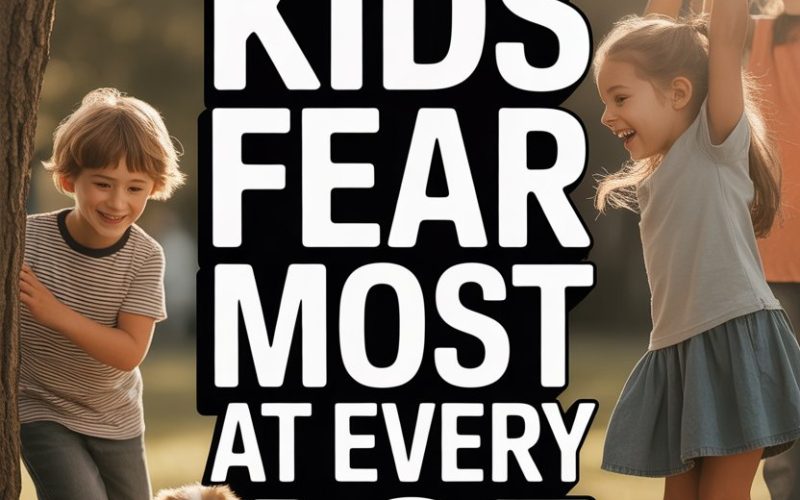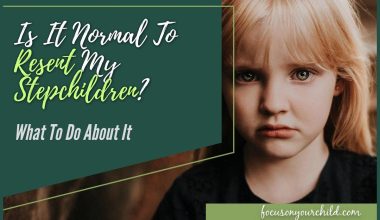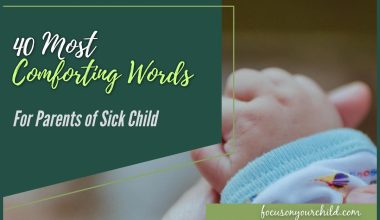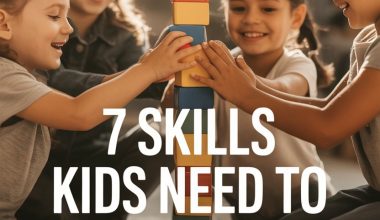Ever wish you had a crystal ball to peer into your child’s mind and see what’s really keeping them up at night (besides the never‑ending requests for water)?
From monsters under beds to social flops at school, kids’ fears change as quickly as their shoe sizes. Understanding these shifting terrors can help parents stay a step ahead—or at least keep the night‑light plugged in.
Here’s a look at what children tend to fear most at each stage, why those worries crop up, and—most crucially—how to help them feel braver, faster than you can say “there’s nothing in your wardrobe.”
Babies and Toddlers — Things That Go Bump, Loud, or Disappear
Babies are born with two basic fears: loud noises and falling. The rest of their anxieties are learned, sometimes with the speed of a toddler spotting a biscuit.
Separation anxiety is the main event from around 6 to 18 months. Vanishing acts by Mum or Dad—even if it’s just a trip to the loo—can send them into a tailspin.
It’s developmentally healthy, though undeniably exhausting for whoever’s doing bedtime duty. Peekaboo isn’t just a game; it’s practice for this very moment.
Helpful trick: Make goodbyes short and sweet. Long, elaborate farewells tend to stoke the drama.
As language emerges, fears start to get more creative. Dogs, vacuum cleaners, the bath plug “eating” the water—anything unexpected or noisy is fair game.
Patience is your friend here, along with a well‑timed cuddle and a quick check under the cot.
Preschoolers — The Monsters Move In
Around age three to five, imagination is running wild. That wildness is brilliant for finger‑painting and superhero capes, less delightful when it’s dark outside and every shadow looks like a boogeyman.
At this age, fear of the dark, monsters, and being alone hit their peak. Studies have found preschoolers are especially prone to night‑time anxiety, fuelled by their blossoming imaginations and not‑quite‑there understanding of what’s real and what’s not.
Pediatric researchers have documented this as a normal stage.
Leave the light on, yes. But also listen without laughing (at least not where they can hear you). Reassurance is key, but so is helping them feel in control—think a spray bottle labelled “Monster Repellent” for a bit of fun.
Other common worries? Strangers, loud toilets, and sometimes even costumes or masks. Preschoolers love magic and fantasy, but sometimes they wish it would just stick to the telly.
Early Primary School — New Fears, New Rules
A child starting school is suddenly living in a world that’s much bigger—and much less predictable.
The main fears now revolve around being separated from loved ones, the possibility of getting lost, and the terror of doing something “wrong” at school.
Performance anxiety makes its grand entrance. Will the teacher be cross if I forget my PE kit? What if I can’t read as well as the others? Small missteps can feel colossal.
Social fears begin to bubble up, too. Being left out of games or birthday parties stings at this age, as friendships take on real meaning.
According to child‑development experts, supportive listening and offering gentle encouragement can help children feel more confident facing these challenges.
Bedtime worries might become a rerun of earlier anxieties, mixed with new ones—like storms, burglars, or even fire drills.
Establish a soothing night routine and avoid big, scary news stories before bed. (And yes, “no more iPad after dinner” is always a winner.)
Late Primary School — Newfound Awareness, New Fears
Seven‑ to eleven‑year‑olds are getting wise to how the world works… and how it sometimes doesn’t. That new awareness brings some very grown‑up worries: natural disasters, illness, war, or parents getting hurt.
Kids may hear about a cyclone in another country and suddenly worry about losing their own home. Or they might fixate on the idea that Mum might not make it back from Woolies this time.
Children often keep these worries tucked away, partly out of embarrassment. Encourage them to talk by being honest about your own worries (in an age‑appropriate way) and showing that it’s okay to feel afraid sometimes.
Cognitive strategies work well here—try “worry time,” when you talk about fears together for ten minutes, then set them aside. And for kids especially sensitive to what’s happening in the world, limit their exposure to the evening news.
Tweens — Social Jitters and the Looming Shadow of Failure
Around age ten to twelve, social fears take centre stage. Kids worry most about how they fit in, whether they belong, and what others think of them.
Embarrassment now feels about as fun as eating year‑old leftovers.
Fear of public humiliation—a wrong answer in class, a wardrobe malfunction, the horror of being chosen last for sport—can loom large during these years.
The desire to blend in peaks, so anything that makes them stand out (good or bad) can feel risky.
A recent survey by the American Psychological Association found that social anxiety and perfectionism spike just before adolescence.
The best balm? Validation. Let them know everyone trips up, says something silly, or sends a text to the wrong group chat. (Yes, even you.)
Role‑play tricky social situations or share your own cringy stories—laughter heals, even if it’s slightly at your expense.
Early Teens — Fear Gets Complicated, Just Like Everything Else
As puberty picks up, so do the complexities of fear. Early teens worry deeply about their appearance, peer acceptance, and the possibility of rejection—by friends, by potential crushes, by that one person whose opinion suddenly matters a lot.
Academic worries ramp up, too. It’s not just about grades, but about “what happens if I fail this test—will my dreams go up in smoke?”
Body image and social status become daily preoccupations. Some may develop health anxieties, convinced every headache is a sign of something dire.
A recent Canadian study highlighted that almost 1 in 3 early teens experience significant anxiety, much of it driven by social and academic pressure.
Open communication is more important than ever. Offer empathy, not lectures. Sometimes, just sitting together in the same room, each on your own device, can open the door for a real conversation.
Older Teens — The Future Looms Large
Older teens are acutely aware of the world and their place in it. Their biggest fears revolve around the future: university, jobs, independence, climate change, politics, finances.
Fear of disappointing parents, teachers, or themselves adds to the pressure. Uncertainty and “what ifs” are everywhere.
Support them by helping break big worries into smaller, manageable steps. Share stories of your own wobbly moments as a young adult.
If anxiety seems to be running the show, it’s worth checking in with a GP or mental‑health professional—a little help goes a long way.
What About Phobias?
Every age comes with its own menu of irrational fears—clowns, spiders, needles, thunder, you name it. Sometimes these grow into phobias that stick around long past the “cute” stage.
Phobias can be debilitating, but they’re also common. Research from The Royal Children’s Hospital, Melbourne notes that up to 10 % of children will develop a persistent, intense fear.
Gentle exposure, praise for brave behaviour, and a bit of professional help when needed can work wonders.
Don’t try to “logic” your child out of a phobia. Instead, offer empathy, a sense of safety, and small steps toward facing the fear.
Practical Ways to Soothe Scared Kids Tonight
- Listen, don’t dismiss. The fear feels real to them, even if it makes zero sense to you.
- Name the fear together. Sometimes just saying it out loud shrinks it down to size.
- Offer comfort, not lectures. Hugs, stories, and lights left on are all valid forms of therapy.
- Model calm. Your own relaxed attitude signals that everything really will be okay.
- Create safe routines. Predictability helps kids feel secure, especially during uncertain times.
- Encourage small steps. Celebrate bravery, even if it’s just peeking out from under the doona.
- When in doubt, reach out. Teachers, GPs, or child psychologists are great allies if a fear is interfering with daily life.
Every Age, Every Stage: You’ve Got This
Children’s fears are as varied as the socks in their drawers, but there’s one thing they all have in common: a need for safety, reassurance, and the occasional “monster spray.”
While the worries change, your response—listening, loving, and laughing when you can—remains the magic ingredient.
Tonight, whether your child’s trembling over thunder or fretting about their future, know that being present (even if you’re exhausted) makes all the difference.
And who knows? Maybe one day, they’ll thank you for all those monster checks—though probably not until they’re buying you a cuppa with their own pocket money.





